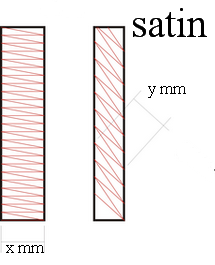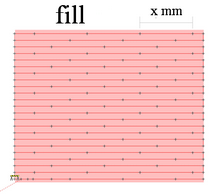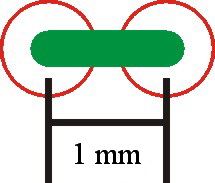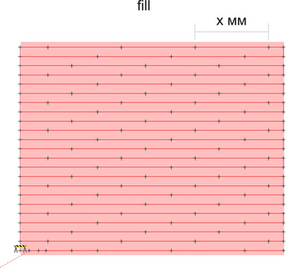Original text by Marina Belova
For all types of stitches the stitch length is a distance between the needle penetrations.
Running stitch length:

Satin stitch length:

Fill stitch length:

The stitch length determines how high the stitch will be over the fabric — this is called loft. The loft value allow the digitizer to achieve various visual effects: more or less luster of the embroidery.

Factors that influence the loft value:
- thread thickness and thread type
- stitch length
- thread tension on the machine
In reality the stitch length is often limited by its minimum and maximum values. We do so from technological considerations and the embroidery wearability:
- in order to prevent the 'birds nests' (where the knot of tangled threads appears on the wrong side side of the embroidery)
- to avoid the "bullet proof vest effect" (where the embroidery is extremely dense and coarse)
- to minimize the thread breakage
- also long stitches may become slack and get caught
General recommendations on the minimal value: don't make them less than 1mm. It is because the two most frequently used threads in machine embroidery are the rayon or #40 polyester. They are about 0.3 mm in diameter. The most common type of needle is #80.

You can see the scale on the photo: the green stitch is 1 mm long, 2 red circles represent needle penetrations; in many fabrics the holes will "close down" (as the fabric will try to return to its original state) once the needle is out. In case the fibers in the fabric are loose, it's possible that there won't be any of them between these two penetrations at all. And so there will be no fully-fledged stitch, but a small loop instead.
It is completely another story with tightly woven fabrics with a lot of interweaving fibers. Every needle penetration result in shifting of the fibers, and if the stitch is very short, they shift even more, so the fabric becomes largely distorted around the hole. Creases and scrimps are evident.
1 mm stitch length may be too short when:
- you use metallic or other tricky threads
- you use thicker than #80 needle
- you embroider on a loosely-knit or loosely-woven fabric
- you embroider on a thick or a tightly-woven fabric
- on leather
- on vinyl
Despite all the peculiarities of the short stitches they have their own advantages:
- they speed up the machine and increase your productivity output
- they are good for rendering details to make them visible
But one should not forget the disadvantages:
- a short stitch is a #1 reason for the thread breakage
General recommendations on the maximum value:
- 5-7 mm for wearable items
- over 7 mm for pictures and other things where the stitches cannot be accidentally caught in something
The pros of the long stitches:
- longer stitches give better coverage
- simultaneously, the stitch count is lower, and the fabric is softer
- thread consumption is lower
- lesser fabric distortion
Cons:
- loops are more likely
- lower embroidery speed, because the Pantograf goes a longer distance
- long stitches may be caught in something while in wear, while washing or ironing, and the embroidery will be distorted at the very best, and even torn in extreme cases.
Despite their apparent simplicity, these rules form the basis for creation of the high-quality embroidery.



There are no reviews to display.